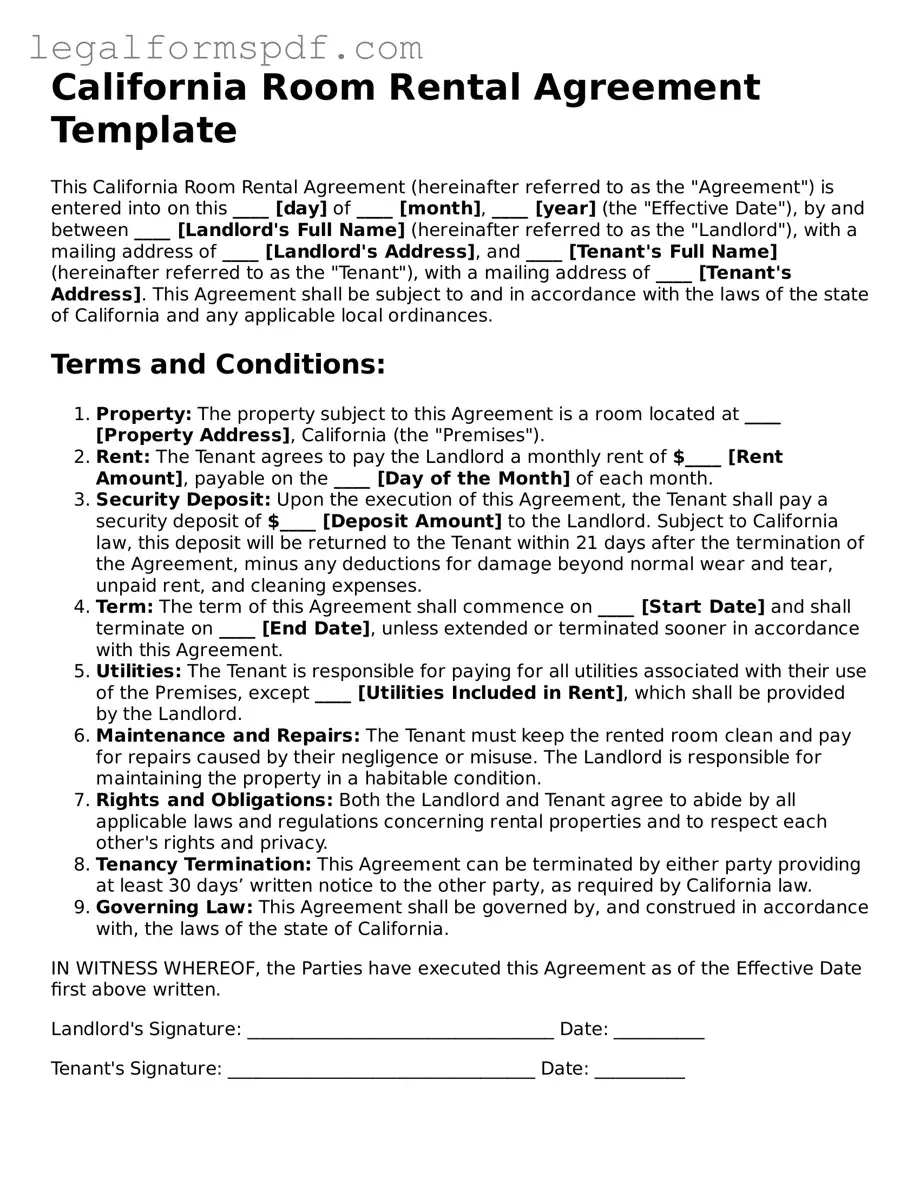What is a California Room Rental Agreement?
A California Room Rental Agreement is a legal document that outlines the rights and responsibilities of a person renting a room (the “tenant”) and the property owner or principal tenant (the “landlord”). This agreement specifies details like rent amount, payment schedule, rules regarding pets, and conditions for termination of the agreement. It is designed to protect both parties in a rental transaction.
Who needs to sign a Room Rental Agreement?
Both the landlord, who could be the property owner or the principal tenant, and the person renting the room must sign the Room Rental Agreement. This mutual consent ensures that both parties understand and agree to the terms outlined. If there are any co-tenants living in the property, it’s also advisable to have them acknowledge the agreement to ensure all occupants are aware of the new tenant's rights and obligations.
How is rent determined in a Room Rental Agreement?
Rent is typically determined by several factors including the size of the room, its location within the property, the current market rates, and any additional amenities provided. Both parties negotiate the rent amount before finalizing the Room Rental Agreement. It’s important for this figure to be fair and reflective of what is offered, as it plays a crucial role in the satisfaction of both the tenant and the landlord.
Can the rent be increased during the lease period?
Whether the rent can be increased during the lease period depends on the terms outlined in the Room Rental Agreement. California law requires landlords to give a specific amount of notice (usually 30 or 60 days, depending on the percentage of the rent increase and the length of tenancy) before raising the rent. It’s important for both tenants and landlords to familiarize themselves with these regulations and clearly state any terms regarding rent adjustments in the agreement.
What happens if a tenant wants to leave before the agreement ends?
If a tenant wishes to leave before the agreement’s expiration, they should notify the landlord as per the terms stated in the Room Rental Agreement. Usually, this involves a notice period (often 30 days). Depending on the agreement, the tenant may be responsible for the rent for the remainder of the lease term or until a new tenant is found, unless otherwise negotiated with the landlord.
Are pets allowed in a room rented under this agreement?
The Room Rental Agreement should clearly state whether pets are allowed in the rented room and any conditions related to pet ownership, such as size or type of pet, number of pets, and any additional deposits required. These terms are negotiable and should be agreed upon by both the tenant and the landlord.
How can either party terminate the Room Rental Agreement?
Termination of the Room Rental Agreement can occur under several circumstances outlined within the agreement, such as the end of the lease term, breach of contract, or mutual consent. Typically, notice needs to be given by the party wishing to terminate the agreement, following the period specified in the agreement (often 30 days). Both tenants and landlords should review the agreement carefully to understand their rights and responsibilities in the event of termination.
